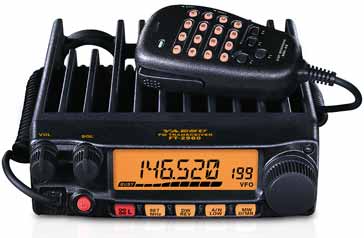How to Use a Ham Radio Repeater
Amateur radio repeaters are widely used on frequencies above 29 MHz & especially at VHF / UHF.
Ham radio repeaters includes:
Repeater basics
Repeater channel offsets
CTCSS repeater access
How to use a repeater
When using amateur radio repeaters, it is necessary to adopt some specific operating procedures for repeaters.
In view of the fact that repeaters can become busy, it is necessary to use them in a way which gives others access when they need it.

How to use an amateur radio repeater
There are a few points that are worth noting so that the best experience can be gained from using an amateur radio repeater.
- Listen first: When using an amateur radio repeater, for the first time it is always best to listen first. Repeaters are often slightly different in the way they operate, so listening enables you to find out how the repeater works and more about the way in which other stations use it. Their operation also varies from country to country, so it is always best to listen first.
- No CQ calls: The first is to note that CQ calls are not made through repeaters. Instead stations announce that they are "listening through" the repeater. This can be done quickly and it is quite sufficient to enable other stations to hear anyone who is calling and then to reply.
- Check the CTCSS tone needed: Before trying to use a repeater it is necessary to make sure that the right CTCSS tone is set, otherwise it is likely that the repeater will not accept your transmission.
- Consider moving to simplex: Once a contact has been set up using an amateur radio repeater, it is quite possible that both stations find they can complete their contact without the use of the repeater. This is particularly true, for example, when two mobile stations are moving towards one another. If this is so then the repeater should be vacated to allow others to use it.
- Give portable and mobile stations priority: As repeaters are intended mainly for mobile or portable stations, fixed stations should only use them when absolutely necessary and priority should be given to mobile or portable stations.
- Don’t talk too long: When using an amateur radio repeater and making a contact through one, it is necessary to be careful not to time out as many repeaters have a time-out mechanism - often as short as a minute or so. To prevent this happening transmissions should be kept to about a minute or so.
- Wait before transmitting in a contact: Another point to note when using a repeater is to ensure that the repeater recognises that the transmission from the other station has ceased before you start transmitting. If this is not done then the repeater may assume that there has been no change in transmission and is may time out.
Knowing how to use an amateur radio repeater is often very simple and straightforward. There are normally no major issues, and they can enable many stations to make a contact which would not be possible directly.
 Written by Ian Poole .
Written by Ian Poole .
Experienced electronics engineer and author.
More Ham Radio Topics:
What is ham radio
Callsigns
Morse code
Voice modes
Digital data modes
QRP operating
Operating awards
Codes & abbreviations
Ham bands overview
Operating via differnet propagation modes
Repeaters
Callsigns
Contact formats
Setting up a shack & buying equipment
Return to Ham radio menu . . .


